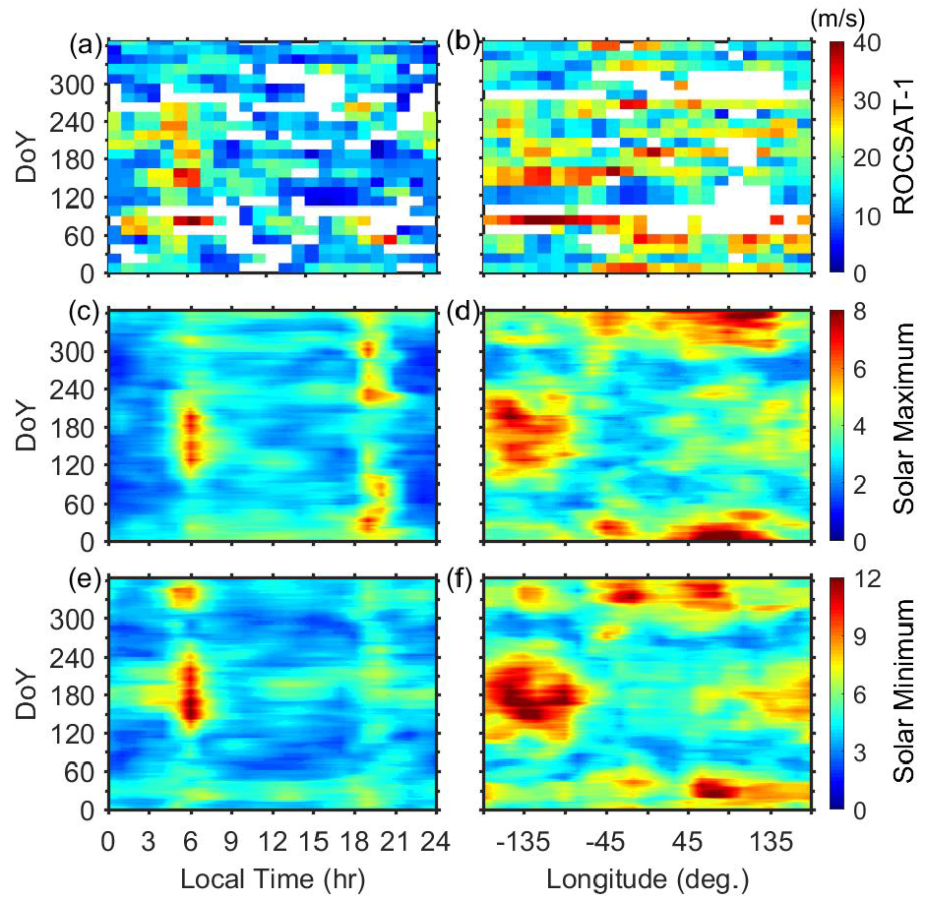Publication Name: Journal of Geophysical Research-Space Physics; Authors: Xu Zhou, Han-Li Liu, Xian Lu, Ruilong Zhang, Astrid Maute, Haonan Wu, Xinan Yue, and Weixing Wan
The ionosphere is different from one day to the next, even under geomagnetic and solar quiet condition. The vertical E×B drift at the geomagnetic equator is a key parameter that influences the state of the ionosphere and atmosphere. In this paper, we study the quiet-time day-to-day variability of the equatorial vertical E×B drift by ROCSAT-1 observations and the Whole Atmosphere Community Climate Model with thermosphere and ionosphere eXtension (WACCM-X) v2.1 simulations.

(Left) Local-time and seasonal variations of day-to-day variability of vertical E×B drift at longitude of 135°W observed by ROCSAT-1 (a) and simulated by WACCM-X at 2.84×10^-8 hpa (~300 km) under solar (c) maximum and (e) minimum condition. (Right) Longitudinal and seasonal distribution of day-to-day variability of vertical E×B drift at LT06 observed by ROCSAT-1 (b) and simulated by WACCM-X at 2.84×10^-8 hpa (~300 km) under solar (d) maximum and (f) minimum condition.
Both observations and WACCM-X show that day-to-day variability is large at dawn and dusk and it also changes with season and longitude. To better study the variability, we carried out numerical experiments with a new stand-alone electro-dynamo model and found that wind variability below ~130 km is the main contributor, and winds above ~130 km plays a secondary role. The ionospheric conductivity mediates the drift variability response to the wind variability and thus affects its strength, seasonal and longitudinal variations. Further, we examine the variability of dawn drifts generated by different tidal components in June, and find that DW1, SW2, D0, and SW1 are the most important ones. This work emphasizes the importance of lower atmospheric variability in studying and predicting the day-to-day variations of ionosphere and space environment.